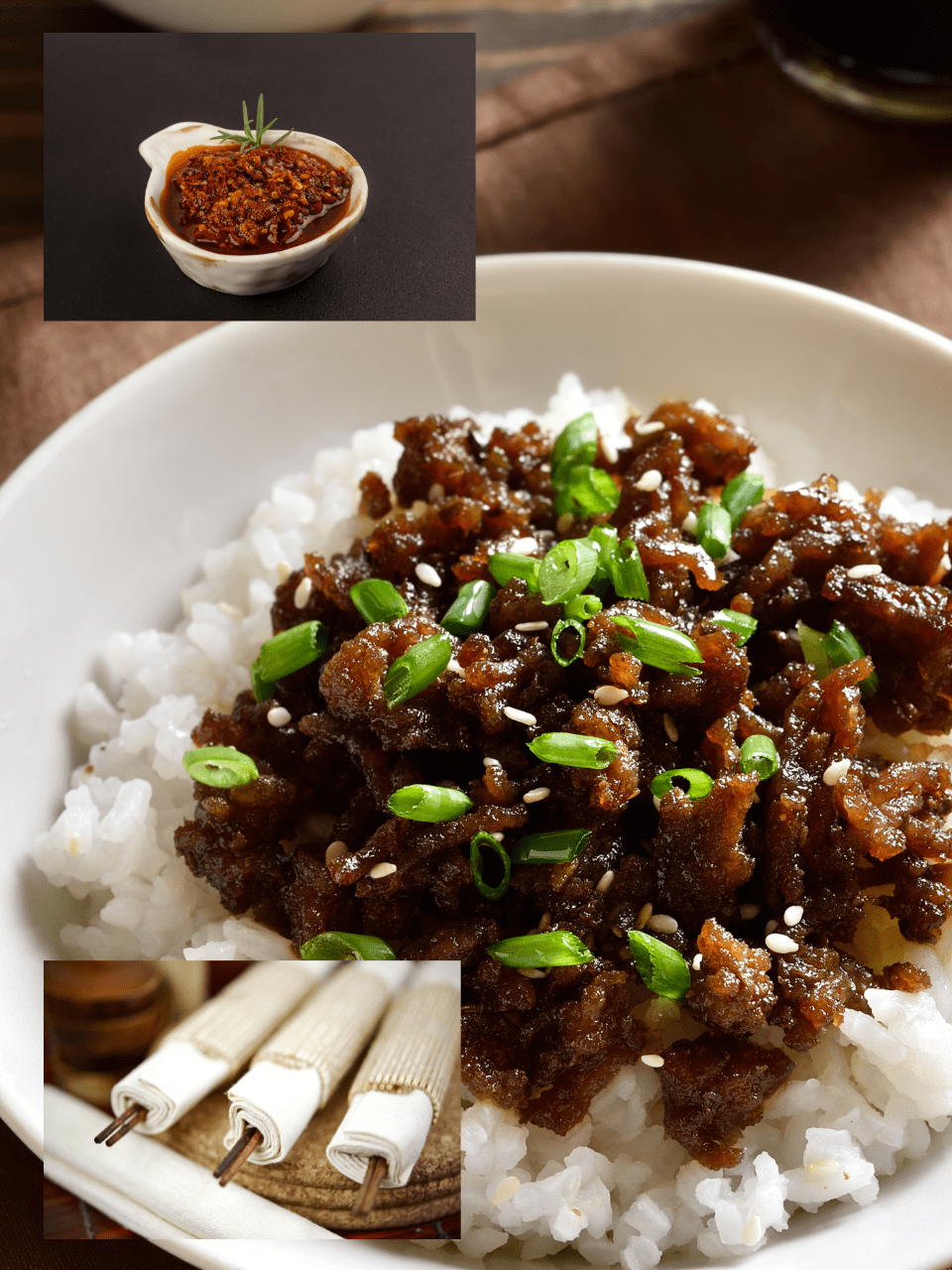If you’re seeking a hearty, mouthwatering dish that brings the flavors of Korea to your kitchen, look no further than bulgogi. Traditionally made with marinated beef, this beloved Korean staple is now accessible to everyone, including those on plant based diets. In this blog post, we’ll guide you through creating a delectable plant based “ground beef” bulgogi that’s full of flavor and easy to make.
Understanding Bulgogi: A Brief Overview.
Bulgogi, meaning “fire meat,” is a classic Korean dish known for its sweet and savory flavor profile. Traditionally, it features marinated beef that is grilled or stir fried, resulting in a tender and juicy meal. The marinade typically includes ingredients like soy sauce, sugar, garlic, and sesame oil, creating a rich taste experience. In our plant based version, we will replace the beef with a plant based ground meat alternative, allowing everyone to enjoy this iconic dish without compromising on flavor or texture.
Why Opt for Plant Based Bulgogi?
1. Healthier Choice.
Plant based options are generally lower in saturated fats and cholesterol. By choosing plant based “ground beef,” you can enjoy a delicious meal while supporting your heart health.
2. Environmental Benefits.
Switching to plant based meals can significantly reduce your environmental footprint. The production of plant based proteins uses fewer resources and emits less carbon dioxide compared to raising livestock.
3. Culinary Variety.
Plant based cooking opens the door to a world of flavors and textures. You can experiment with various ingredients and find unique combinations that suit your taste.
Ingredients for Your Plant Based Bulgogi.
To create this scrumptious dish at home, gather the following ingredients:
For the “Ground Beef ” :
- 1 lb (450 g) plant based ground “beef” (such as Beyond Meat or homemade lentil blend)
- 1 tablespoon cooking oil (vegetable or sesame)
For the Marinade:
- 3 tablespoons soy sauce (or tamari for a gluten free option)
- 1 tablespoon sesame oil
- 2 tablespoons brown sugar (or maple syrup for a healthier twist)
- 2 cloves garlic, minced
- 1 teaspoon freshly grated ginger
- 1/4 teaspoon black pepper
- 1-2 teaspoons rice vinegar or mirin (to enhance flavor)
- 1/2 teaspoon gochugaru (Korean red pepper flakes) for heat (optional)
Optional Vegetables:
- 1 small onion, thinly sliced
- 1 carrot, julienned
- 1 cup sliced mushrooms (shiitake or button)
- 1/2 cup chopped green onions for garnish
Toppings:
- Toasted sesame seeds
- Freshly chopped green onions
- Kimchi for an authentic touch
Step by Step Guide to Making Plant Based Bulgogi.
Step 1: Create the Marinade
In a bowl, combine the soy sauce, sesame oil, brown sugar, minced garlic, grated ginger, black pepper, rice vinegar (or mirin), and gochugaru. Whisk until fully blended. Taste and adjust the seasoning to your liking.
Step 2: Marinate the “Ground Beef “.
In a larger mixing bowl, add the plant based ground “beef.” Pour the marinade over it, ensuring that all the “beef” is well coated. Allow it to marinate for at least 15-20 minutes (or longer in the refrigerator for deeper flavor).
Step 3: Cook the Bulgogi.
Heat a skillet or wok over medium high heat. Add a small amount of cooking oil if desired. Once hot, add the marinated ground “beef” to the skillet. Cook for 5-7 minutes, breaking it apart with a spatula until browned and slightly caramelized. If you opted for vegetables, stir them in during the last few minutes of cooking.
Step 4: Serve and Relish.
Transfer the bulgogi to a serving platter and garnish with toasted sesame seeds and chopped green onions. Serve hot with steamed rice, lettuce leaves, or alongside your favorite banchan (Korean side dishes).
Helpful Tips for an Amazing Bulgogi.
- Choose Quality Ingredients.
Selecting high quality plant based “beef” will elevate your dish. Brands like Beyond Meat and Impossible Foods provide great taste and texture. - Marinate Longer for Enhanced Flavor.
For maximum flavor, consider marinating the “beef” for up to an hour or even overnight in the fridge. - High Heat for Best Results.
Cooking at a high temperature allows the sugars in the marinade to caramelize, giving you that signature bulgogi taste. - Spice it Up.
Feel free to adjust the heat by adding more gochugaru or mixing in gochujang for an extra kick. Don’t know about you but for me, I love to add a touch of chili oil to give it more kick and taste.
Delicious Serving Suggestions.
The beauty of plant based bulgogi lies in its versatility. Here are a few delightful ways to enjoy this dish:
- Classic Over Rice: Serve the bulgogi over a bed of fluffy steamed rice for a comforting meal.
- Lettuce Wraps: Fill crisp lettuce leaves with bulgogi for a refreshing, low carb option.
- Bulgogi Tacos: Get creative and use the bulgogi as a filling for tacos, topped with avocado and salsa.
- Noodle Bowl: Toss the bulgogi with stir fried noodles and vegetables for a quick and tasty dish.
Conclusion.
This plant based “ground beef” bulgogi is a delightful twist on a classic dish, allowing you to savor the rich flavors of Korean cuisine without meat. Perfect for weeknight dinners or special occasions, this recipe is sure to impress anyone at the table. So gather your ingredients, follow our steps, and enjoy the savory, sweet, and utterly satisfying experience that is plant based bulgogi!Don’t forget that bottle red wine to compliment this dish, Bon Appetit!
Yeung Man Cooking book. Learn more
Chili oil ( • Most addictive Red Chili Oil Recipe t… )
FAQs .
1. Can I substitute tofu for the plant based ground “beef “?
Yes, crumbled tofu or marinated tempeh can be excellent substitutes, giving you a different yet satisfying texture.
2. Is this recipe suitable for gluten free diets?
Absolutely! By using tamari instead of soy sauce, you can easily make this dish gluten free.
3. Can leftovers be stored?
Yes! Store any leftover bulgogi in an airtight container in the refrigerator for up to 3 days. Reheat in a skillet for best results.
4. What side dishes pair well with bulgogi?
Consider serving it with traditional sides like kimchi, pickled vegetables, or a simple cucumber salad to balance the meal.
5. How can I make this dish spicier?
To add more heat, increase the amount of gochugaru or drizzle in some gochujang during cooking.

